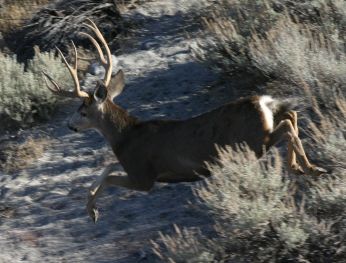“What’s that smell?” It’s probably a thought that runs through your head multiple times in a day, whether you’re trying to identify a certain aroma in a restaurant or are being charmed by seasonal foliage during a walk in the woods. The smell of honeysuckle during the summer or pumpkin in the fall conjures images of a season and creates lasting memories. For hunters, the human scent they leave behind while scouting or hanging trail cameras similarly leaves a telling trace — one that can hurt the chances of harvesting a deer. Robinson Outdoor Products’ Jason Herbert explains how human scent leaves a lasting impression and how you can minimize the scent you leave behind.
It is important for scent-free hunters to constantly strive to be invisible to the deer. Quite often overlooked, entrance and exit routes are important in the quest for stealth. Obviously, we do not want to make a bunch of noise accessing our stands. Too many foreign sounds may put the deer on alert, and cause them to keep to the security of their beds until well after sunset. Many hunters are now entering their morning stands AFTER first light, so they can see where they are stepping and be on the watch for moving deer. How often have we hunters carefully snuck to our stands only to hear a deer alarm blowing at us from the darkness?Along with these logical access strategies, it is important to remain scent free. Any rogue wind blowing around will carry human scent a long way downwind from the faint trail the hunter followed to his stand. The same is true after the hunt. After many hungry, frozen hours on stand the sunset is often a welcome sight, but it is important to not hurry back to the truck, but rather take a logical way out, playing the wind and keeping quiet.
Photos: California Department of Fish and Wildlife (top) Robinson Outdoor Products (above)



















![The Best Deer Camp Chili [VIDEO] Deer Chili Ingredients, Tomatoes, Chili Spices](/wp-content/uploads/2015/10/Deer-Chili-Deer-Camp-Recipe-218x150.jpg)
![How to Call Elk Early in the Season [VIDEO]](/wp-content/uploads/2016/08/byers003-218x150.jpg)





![Idiots Disturb Hunter: How Would You Have Handled It? [VIDEO]](/wp-content/uploads/2015/10/DSC00110-e1474487693878-100x70.jpg)
![Albino Buck Shocked to Shed His Antlers [VIDEO]](/wp-content/uploads/2015/10/AlbinoDeer-100x70.jpg)